
[Halachically Speaking appears on YWN weekly, Tuesdays and Thursdays]
Written by Rabbi Moishe Dovid Lebovits of KOF-K Kosher Supervisio
|
Many people are not familiar with the halachos of shaimos. The problem with the volume of shaimos, only developed fairly recently with the advent of cheap, commonly utilized printing methods. After reviewing these halachos one will have a clear understanding of what is indeed shaimos and how to properly dispose of them.
The posuk[1] tells us that there is a requirement upon all of klal yisroel to destroy and break any idol, and to remove their names from our midst, and one is forbidden to do this to Hashem’s name. The issur to destroy or break a name of Hashem is called Lo Sason Kein L’Shem Elokaycheim.” The Gemorah[2] says that included in this issur is the prohibition to erase the name of Hashem. The Rambam[3] says that whoever destroys any of Hashem’s names receives malkos. The Chinuch[4] says the reason for this mitzvah is in order to come to fear Hashem. Whoever is not careful with the kedusha of seforim will have to give a din and chesbon over it after 120 years.[5]
If one gives the right respect to something which deserves to be buried then Hashem will have compassion on us and He will make sure that klal yisroel does not get destroyed.[6] The Mishnah[7] says if one honors the Torah then he will be honored and liked by the world.
There is a big discussion in the poskim if something is not hand written but rather printed if it has kedusha.[8] The consensus of the poskim is that it is equal to being hand written.
The Names of Hashem As previously mentioned one is forbidden to erase the name of Hashem. Those names are:שם הויה, אדנות, א-ל, א-לוה, אל-הים, ש-די, צב-אות.[9] These names are required to be put into shaimos.[10] Rachum, Chanun, Hagodel Hagibbur are not required to be placed in shaimos.[11] There is a dispute if the name of Hashem in English (G-d) may be erased.[12] The following does not need geniza and one may throw items containing these names in the garbage.[13] Writing a Daled,[14] Hashem (in English or Hebrew),[15] Hakodesh Boruch Hu,[16] B’ezras Hashem[17] and writting BS’D (bais samach daled).[18] Some are careful and did not write a BS’D on top of a letter.[19] Some question if writing a kuf instead of a heh does not require shaimos, but the minhag is to be lenient.[20] There is a dispute in theposkim if one writes the letters Bais and Heh if they require to be put into shaimos. Some were careful about writing these letters on top of a letter if they will be thrown away.[21] The overwhelming custom is to permit the writing of bais and hey on top of a letter even if the letter will be thrown away[22] (but not in a disgraceful place).[23] This is how the Brisker Rav was noheg as well.[24] Writing the name Eibishtar is permitted and does not need to be put into shaimos.[25] Many say even if one breaks up the letters of a name ofHashem by placing a hyphen between the letters, it still requires geniza,[26] while others are lenient.[27] According to the lenient opinion, if one is concerned that the writing may end up in a disgusting location he should hyphenate the name of Hashem (for example G-d).[28] Horav Moshe Feinstein zt”l was stringent with hyphenated Hashem’s name.[29] When writing the numbers in Hebrew of 16 and 17 the minhag is to write tes vov and tes zayin instead of yud heh, and yud vov.[30] (One should not say Hashem’s name even in English for no reason.[31] When one says “thank G-d” it is not considered saying Hashem’s name for no reason since it is the derech for people to say it and he does not have intention of Hashem’s name to be mentioned per ‘se).[32]
Sending out Papers with Hashem’s Name One should not send out advertisements with the name of Hashem written on it because most people just throw it in the garbage without knowing they are not allowed to and it comes to a disgrace. Many organizations do this and it is not correct.[33] One may do so if one is not writing the complete name.[34]
Chocolate “Gelt” During Chanukah chocolate gelt is available on the market which says “in G-d we Trust” on it. The question arises how one is allowed to eat it since he is erasing the name of Hashem (albeit in a different language) This does not make a difference according to someposkim.[35] Some say l’chatchilah one should not purchase such chocolates, however, if they were purchased already they can be eaten since when one eats it that is not considered erasing since it is the normal manner to eat it.[36] Others say one can purchase it even l’chatchilah and rely on those poskim who maintain the name of Hashem written in a different language is permitted to be erased. This seems to be the custom of most people.[37] There is a custom to give a child who is getting his hair cut by his upsherin a piece of cake with honey and a posuk written on it.[38] The reason for it is to open the child’s heart to Torah by licking the honey and eating the cake.[39] Some say that one may eat the piece of cake that contains a posuk because it is made for that purpose and has nokedusha.[40] Others took issue with this and did not permit it.[41]
Lights with Hashems Name Some poskim maintain that lights which spell out the name of Hashem are permitted to be turned off and it is not considered that one is erasing the name of Hashem.[42]
The Name Shalom Shalom is a name of HHHNJashem,[43] therefore it should be treated with more kedusha than other names that people are called. One may not greet someone in an inner bathhouse by calling out Shalom.[44] Many are lenient with this and simply drop off the last letter of Shalom.[45] Some maintain if a person is writing Shalom on a letter it should be abbreviated and written either without the mem or without the vov,[46] while others maintain this is not necessary.[47] If one is writing Shalom as a greeting, then he may write it in the regular way (Shalom).[48]
Tapes/Discs/Computer Many times one has tapes with Hashems name recorded on it and after a while he wants to copy over the tape (or a C.D) in order to copy something else on to it. If one wants to copy over it he should let a goy do it for him or a young child.[49] Some say he can do it himself and it is not considered erasing Hashems name since there is no real substance to the words on the tape.[50] Horav Yaakov Kamenetsky zt”l said other Torah should be copied over a Torah tape.[51] If there is no posuk or name of Hashem many poskim are lenient to erase it.[52] These tapes when finished with them may be thrown in the garbage.[53] Others say one should wrap the tape in a bag prior to throwing it out.[54] One should initially try not to record any of Hashem’s names on a tape.[55] One is permitted to erase the name of Hashem or a posuk that is written on a computer screen since it is not considered erasing.[56] Divrei Torah written in microscopic letters or on microfilm should be treated with the same kedusha as a regular sefer. If one cannot put it in shaimos he should wrap it in a bag before discarding it.[57]
Writing Torah on a Blackboard Many times a teacher writes Torah on a blackboard. Some poskim say that they can write Torah and erase it, since the intention is to write more Torah on the blackboard.[58] Some say the reason why it is permitted is because there is an unspoken condition made that no kedusha should be placed on this Torah.[59] The eraser is not required to be put into shaimos.[60] One is not allowed to erase something on a blackboard that contains the name of Hashem.[61] The custom seems to be, to permit the erasing of BS’D (in Hebrew) on top of a blackboard.[62]
Seforim The Magen Avraham[63] says just as a sefer Torah which is unusable needs to be put into a earthenware utensil and buried, so too regarding seforim. The minhag is not like this Magen Avraham.[64] A T’nach, Gemorah, Mishnayos, Siddur, Halacha, or Mussar sefer[65] that is unusable has to be put into shaimos.[66]
Horav Moshe Feinstien zt”l[67] said an old sefer of Torah Sh’bal Peh may be thrown out if it becomes unusable (if it does not contain the name of Hashem).[68] The reason is because Torah Sh’bal Peh only has kedusha if one is learning from it. Once the initial use is gone one may throw it out. This is a big chiddush and he says it is only true if the gedolim in Eretz Yisroel would agree with him. The gedolim in Eretz Yisroel hold one may not rely on this, and chas v’sholom to throw an old Gemorah etc in the garbage.[69] Horav Moshe zt”lhimself never paskined to throw out an unusable Gemorah etc. as a matter of halacha l’maseh.[70]
Some say if a new, corrected version of a sefer is published, the old one may be put into shaimos.[71] One should not place a sefer which one does not want to bind into shaimos, rather he should see to it that it is bound.[72] A bookmark that was used for a sefer may be thrown in the garbage.[73] A sefer that was never used may be placed in shaimos because it does not have kedusha.[74] If a page of a Gemorah ripped out and one would not use the rest of the Gemorah one may put the sefer into shaimos.[75] When the binding of asefer falls off it should be put into shaimos.[76] Many times the string that a sefer was bound with comes off. These strings require to be put into shaimos since they were in the sefer for a long period of time it is considered as part of the sefer.[77]
One who writes mareh mekomos on a paper which only he can read does not have to be placed into shaimos.[78] Some say this refers to a sheet which has mareh mekomos for a shiur without any halacha or gemorah on them.[79]
Children who come home with Torah sheets from Yeshiva should place them in shaimos.[80] Others say one can be lenient and place them in a plastic bag in the garbage.[81]
Rough Drafts Many poskim dealt with the problem they had at hand which was the printer’s rough drafts. The printers would make rough drafts that were full of errors. They would correct them trying to produce a final draft. The question many poskim dealt with is what to do with the rough drafts. After a while they had hundreds of these drafts. Eventually the place to store them became very scarce and a solution was needed.
Some poskim suggested that the rough drafts be burned since it costs a lot of money to keep all these rough drafts around, and if they were not burnt then they would come to a greater disgrace by just lying around.[82] Nonetheless, many poskim disagreed with this premise and said it is forbidden to burn any sefer[83] including rough drafts.[84] Throughout the years people have burnt seforim, but that was because the goyim would have done disrespectful acts to it and it would have come to a greater disgrace.[85]
Other poskim suggested that divrei Torah is only forbidden to be thrown out etc. if one has intention for the Torah to acquire kedusha. However, if one does not have that intention, then divrei Torah without the name of Hashem may be thrown away (not in a disgraceful manner, but put in the garbage wrapped in a plastic bag).[86] Therefore, according to this reasoning the printers should have in mind beforehand that these pages should not have kedusha, since these pages are not being learnt from and are just printed to correct.[87] Some say no condition is needed because one does not have intention for these pages to last, only for one to look at the mistakes and to correct them.[88]
Others suggest one should get rid of it by a grama. A goy or child[89] should take them away even if they will be destroyed.[90] Accordingly, one would be able to take them and place them in front of one’s house for the garbage men to take. However, this is only true for shaimos which do not contain any of Hashems names in them. Many poskim did not like this idea, since doing so is considered destroying it with his own hands.
Many of the contemporary poskim say that today the above heterim do not apply and one should treat the rough drafts with kedusha. These heterim were used when the Torah would otherwise come to disgrace, this is not true today when we can place them intoshaimos.[91]
Newspapers There are some poskim who wish to suggest that just as many hold that the printer’s drafts do not need to be placed in shaimos, so would be true regarding our journals and newspapers. They reason that since they are normally thrown out after a short period of time one would be able to discard them.[92] Others say to wrap it in a bag first.[93] Nonetheless, most poskim maintain that one may not discard a newspaper containing Torah.[94] The publishers have intent for one to learn from the Torah in the newspaper. Therefore, they are sanctified and a condition prior to the printing would not help to rid the newspaper of kedusha.[95]
Therefore, one should rip out the divrei Torah in the newspaper and place it in shaimos.[96] Although this may seem difficult with some papers whose Torah is spread throughout the newspaper one will get the hang of it eventually.[97]
Many poskim took strong issue with the fact that newspapers contain divrei Torah and they say a newspaper is not a place for Torah since many treat the Torah in a newspaper with disrespect by throwing it out etc.[98]
In conclusion, on this issue of newspapers, you see many people are not careful with this and throw out the newspapers with the divrei Torah in them. If one is going to throw out a newspaper containing divrei Torah (without the name of Hashem or a posuk)[99] he should wrap it in a bag and then put it outside together with the rest of the garbage and let the goyim take it away.[100]
Nonetheless, we are dealing with the honor of the Torah, and many poskim maintain that one should not throw out the divrei Torah, but rather one should place it in shaimos. This being the case one should try to do whatever he can in order to place the divrei Torah inshaimos. When putting the divrei Torah in shaimos you should cut it out of the paper. It is disrespectful to the shaimos if the whole paper is placed in shaimos.[101] One should be careful that the divrei Torah part of the newspaper is not on the floor.[102]
Book of the Missionaries Many poskim maintain that a “book” of the missionaries which may contain a t’nach may be burnt and one should not keep this in his possessions.[103] Others maintain that one should place this sefer in shaimos.[104]
Recycling Some poskim say one is permitted to recycle shaimos (without Hashems name) if one is doing so to write new seforim.[105] However, one would not be able to do this if the divrei Torah being recycled is going to be used for secular material or for toilet paper (common in Eretz Yisroel).[106] Nonetheless, most poskim disagree and hold one is forbidden to recycle divrei Torah for any reason whatsoever. The reason is because it is a great disgrace to the seforim or divrei Torah.[107]
Pesukim One is forbidden to write a posuk if the object it is written on will come to a disgrace.[108] Therefore, one should refrain from writing a posuk in a newspaper since it will come to a disgrace.[109] Some say one should not write a posuk (i.e. la’yehudim etc) on themishloach manos for this reason.[110] Writing pesukim like kol sasson on invitations will be discussed below.
The custom is to write a posuk on a challah cover,[111] a tzedaka box[112] or a becher[113] since these objects do not come to a disgrace.
One is forbidden to write a posuk or a beracha on a tallis godel since one might take the tallis into the bathroom.[114] If one bought such a tallis then a beracha may still be recited on it.[115] Today, we see talleisim printed with a posuk on them and one begins to wonder how can they do this when it is seemingly against halacha. However, today the custom is that one does not take a tallis into the bathroom for any reason. Therefore, one can say that this is why the minhag of some circles is to have a posuk written on a tallis. One must be careful not to sit on the words on the tallis.[116]
On Succos many decorations contain pesukim. Some poskim say that since these decorations come to a disgrace by being stepped on, one is not allowed to buy such decorations.[117] However, the minhag in klal yisroel is that buying these posters is permitted and one should make sure to treat them with the proper respect.[118]
What is considered a Posuk? Two or three words of a posuk are considered like a whole posuk if one is able to understand that it was taken from a posuk.[119] If one is not able to tell that it is from a posuk then one may not write four words.[120] One word from a posuk does not require being put into shaimos. [121]
Invitations One is not allowed to write a posuk or a message from chazal on an invitation because an invitation is generally discarded.[122] One who receives an invitation with a posuk on it should cut out the posuk and place it in shaimos.[123] Some change the format of theposuk and write it on two different lines in order to avoid the pesukim from coming to be disgraced by throwing it out. The reason why this is not considered writing a posuk is because it is on two different lines and is not read as one posuk. Based on this someposkim say that one should write kol sosson; v’kol simcha; kol chosson; v’kol kallah on different lines.[124] Many poskim did not write any pesukim on an invitation even in the aforementioned manner.[125] Horav Moshe Feinstein zt”l maintains this is how one should act.[126] Some say the custom is not to write a posuk etc. on an invitation.[127]
The words of od yishoma etc. are taken from two different parts of one posuk.[128] Some say one should be stringent with this as well.[129] Others say a group of words which have no intention of being written for a posuk, but rather as a “melitzah” is permitted to be written.[130] Therefore, the custom of many has become to write od yishoma etc on an invitation.[131]
A posuk in which the language is changed from singular to plural may be written on the invitation.[132]
Some have the custom to write “naaleh” eis Yerushalayim instead of the real word to avoid having the posuk come to being disgraced when the invitation is thrown out.[133]
According to some poskim writing a posuk in a way that is not allowed, would not be permitted even if it is written in a different shape.[134] Some say that since they write od yeshoma in a different form than in the posuk (rainbow shaped) it is permitted to be done.[135] Some say if one gets an invitation with a posuk on it that is not written in a permitted fashion he may throw out the invitation, but he should wrap it in a bag beforehand.[136]
Invitations- Kesav Ashuris Many poskim maintain that one should refrain from writing secular material in kesav ashuris (the script used to write a sefer Torah),[137] especially if one is going to discard the invitation. This form of writing has a special kedusha to it. Therefore, one should refrain from writing wedding invitations in this manner since one is going to throw out the invitation.[138] Others say an invitation is considered a devar mitzvah and one would be permitted to write a wedding invitation using kesav ashuris.[139] Some poskim say that kesav m’ruva (the standard way of written Hebrew) is considered like kesav ashuris.[140] Based on this one would not be able to write an invitation with this lettering and one would have to use Rashi lettering instead.[141] However, many poskim say that kesav m’ruva does not have the same kedusha as kesav ashuris.[142]
Halacha on a Food Item A food label that says which beracha to recite on the food does not require to be placed in shaimos.[143] For example, a bottle of wine that says one recites a hagofen.[144] Some say only if the words are not written on one line can one be lenient.[145] In any case theminhag is that the above does not require shaimos.[146] Miscellaneous A story book that is meant for children and teaches something to them has kedusha and is required to be put into shaimos.[147] Some say tzadikim biographies that contain no pesukim or a mamer of chazal may be thrown into the garbage.[148]
Tests which have divrei Torah on them need to be placed in shaimos.[149]
A nusach that chazal established, even if it does not contain Hashems name requires to be placed into shaimos. Therefore, a tefillas haderech card requires to be placed into shaimos.[150]
Pictures drawn in order to understand the parsha do not require shaimos if a posuk is not written on them.[151] The same would apply to Noachs tent made from paper etc.[152]
A sefiras ha’omer chart which just say the day without a beracha may be thrown out.[153]
A chart which says the time of krias shema or tefilla should be put into shaimos. A chart which just says when Shabbos comes in and when Shabbos is over, may be thrown out.[154]
A paper on which Divrei Torah was written which ripped needs to be put into shaimos even if the divrei Torah is not on the entire paper.[155]
Many times one is walking in the street and a poster of some sort of Yiddish relevance is on the street. One does not have to throw this poster in shaimos if it does not contain a posuk or a halacha. However, one should be careful not to step on it.[156]
Zemiros Shabbos that does not contain halacha, name of Hashem or a posuk should still be placed in shaimos since it contains praises of Hashem.[157]
The Shaimos Bag Every house should have a designated bag for shaimos. One does not have to place shaimos in a bag in an orderly fashion.[158] One is permitted to place a chumash on top of a gemorah.[159] One should be careful not to step on the bag of shaimos.[160] One should not place a shaimos bag in a place where it may rain.[161] The minhag seems to be that there is no concern with placing the shaimos in a bag on the floor.[162]
The “Shaimos Box” Many times one refrains from placing items in shaimos because the accumulated amount of shaimos takes up a lot of room in one’s house.
However, this problem was solved with the innovation of the Shaimos Box. One can pick up this box in any seforim store. It is a box which measure 12” x 7” x 15” which is enough for twenty pounds of shaimos. One can put it in a corner of his house let it fill up and when it is full one can mail it to the address on the box. Once it is there the OU certifies that the shaimos will be buried according to halacha. It is usually buried during Tisha B’av. With this box one does not have to wait until Pesach to bring many heavy bags ofshaimos to a drop off location. [1] Devarim 12:4, see Torah Temimah ibid:12:4. [2] Mesechtas Makos 22a, see Shulchan Aruch Y.D. 276:9. [3] Hilchos Yesodei Hatorah 6:1, see Sefer Hamitzvahs (Rambam) lo sasei 65. [4] Mitzvah 433. [5] Taz Y.D. 271:8. [6] Sefer Matamim page 140:11 (new). [7] Pirkei Avos 4:6. [8] Refer to Rama M’Pano 93, Taz O.C. 284:2, Y.D. end of 271, Magen Avraham O.C. 32:57, 154:14, 334:17, Rav Poalim 2:24, Mishnah Berurah 40:4, Maharsham 3:357, Minchas Yitzchok 1:17:8, Eyunei Halachos 2:page 564, Be’er Moshe 3:174:4, 8:47, Shevet Ha’Levi Y.D. 5:163, Tzitz Eliezer 3:1, Ginzei Ha’kodesh 1:footnote 4. Refer to Chazzon Ish Y.D. 164:3 who is lenient. [9] Refer to Mesechtas Shavuos 35a-35b, Tur Y.D. 276, Shulchan Aruch 276:9, Bais Yosef. Some say אהיה אשר אהיה (Shulchan Aruch ibid). [10] Ginzei Ha’kodesh 7:1 page 266:75 quoting the opinion of Horav Chaim Kanievesky Shlita. [11] Mesechtas Shavous and Tur ibid, Aruch Ha’shulchan Y.D. 276:23, Ginzei Hakodesh 7:7, see Shulchan Aruch O.C. 85:2. [12] Refer to Shach Y.D. 276:11, Pischei Teshuva 11, 19, Mishnah Berurah O.C. 85:10, Aruch Ha’shulchan Y.D. 276:24, C.M. 27:3, Ginzei Hakodesh 7:footnote 24. [13] Opinion of Horav Elyashiv Shlita quoted in Ginzei Hakodesh 7:footnote 11. [14] Aruch Ha’shulchan Y.D. 276:28, see Shevet Ha’kehusi 4:256:2. [15] Igros Moshe Y.D. 2:138, Ginzei Hakodesh 7:footnote 8. [16] Ginzei Hakodesh 7:5. [17] Igros Moshe ibid, Ginzei Hakodesh 7:5, Orchos Rabbeinu 1:page 257:43, see Doleh U’mashka page 341. The Chazzon Ish did not even write a BS’D when he started writing on top of a paper (Orchos Rabbeinu ibid). [18] Igros Moshe ibid, Betzel Hachuchma 4:105, Rivevos Ephraim 4:203, Ginzei Hakodesh ibid:footnote 9, Nezer Ha’chaim page 217:166. [19] Orchos Rabbeinu 1:page 257:43. [20] Shevet Ha’kehusi 2:288, 4:256:1, Ginzei Hakodesh 7:footnote 12 quoting the opinion of Horav Korelitz Shlita. [21] Tz’fnas Pa’ne’ach 196:page 155, Toras Chaim page 138, Piskei Teshuvos 3:292:page 50, Rivevos Ephraim ibid, Ginzei Hakodesh 7:footnote 13, Nezer Ha’chaim page 217:166, Ginzei Hakodesh 7:footnote 13 quoting the opinions of Horav Ben-zion Abba Shaul zt”l and Horav Shlomo Zalman Aurbach zt”l, see Yugel Yaakov footnotes 350-353, Doleh U’mashka page 341, Nekius V’kovod B’tefilla page 101:37-38.The Betzel Hachuchma 4:105 says midakdikim do not throw out a paper with the letters bais and hey. [22] Melamid L’huel O.C. 113:20, Yaskil Avdi Y.D. 7:20:3, 8:13, Yechaveh Da’as 3:78, Avnei Yushfei 1:13:2 quoting the opinion of Horav Wosner Shlita, Yugel Yaakov footnotes 350-353, Ginzei Hakodesh 7:footnote 13 quoting the opinion of Horav Elyashiv Shlita. [23] Igros Moshe Y.D. 2:138. [24] Teshuvos V’hanhugos 1:640. He quotes that the Gr’a was stringent. [25] Igros Moshe 1:172 (end), Teshuvos V’hanhugos 1:639. [26] Avnei Nezer Y.D. 365:1, Ginzei Hakodesh 9:9:6:footnote 35. [27] Minchas Yitzchok 9:62:3, Halichos Shlomo Tefilla 22:footnote 34, Ginzei Hakodesh 7:footnote 29 quoting the opinion of Horav Elyashiv Shlita. [28] Ginzei Hakodesh 7:footnote 26. [29] Sharei Simcha (Shavuos) page 16. [30] Yosef Ometz page 279, Piskei Teshuvos 154:footnote 126. [31] Kitzur Shulchan Aruch 6:3, see Rivevos Ephraim 5:560 who says one should not say ado’shem instead of saying Hashem’s name. Refer to ibid:5:474. [32] Pischei Halacha (Berochos) Miluyim 3:page 242.. [33] Igros Moshe Y.D. 2:134-135. [34] Ginzei Hakodesh 7:17:footnote 35 quoting the opinion of Horav Elyashiv Shlita. [35] Refer to footnote 12. [36] Ve’alu Lo Yeibol 2:page 120:119. [37] Horav Yisroel Belsky Shlita. [38] Rokeach 296. Refer to Natei Gavriel Pesach 3:pages 358-359. [39] Dugel Mervuva O.C. 340:3, see Osios Machkimos pages 183-187. [40] Opinion of Horav Elyashiv Shlita quoted in Giznei Hakodesh 11:19:footnote 30, page 265:62 quoting the opinion of Horav Chaim Kanievesky Shlita, see Bais Yitzchok Y.D. 2:107. [41] Refer to Chavos Yuer 16, Sheilas Yaavetz 2:140, Pri Ha’aretz 2:4, Ginzei Hakodesh 11:19. Refer to Nishmas Shabbos 4:96. [42] Sharei Kodesh 166. [43] Refer to Gemorah Shabbos 10b, Ran Shabbos 4b, Tosfas Sotah 10a “eleh,” Magen Avraham 84:2, Sharei Teshuva 151:1. See Aruch Ha’shulchan Y.D. 276:28, Avnei Yushfei 1:12. [44] Gemorah Shabbos 10b. Refer to Chai Adom 3:36, Mishnah Berurah 84:6. One is permitted to walk into the bathroom with the name Shalom on a yarmulka. [45] Refer to Taz 84:3, Machtzis Ha’shekel O.C. 84:2, Pri Megadim M.Z. 3, Chai Adom 3:36, Nishmas Adom 9, Birchei Yosef 85:9, Mishnah Berurah 84:6. [46] Rama Y.D. 276:13, Mishnah Berurah 86:4, Yabea Omer Y.D. 4:22, Halichos Shlomo Tefilla 22:footnote 34. [47] Shach 16, Be’er Moshe 4 :8, Yabea Omer ibid. See Igros Moshe O.C. 4:40:1, Rivevos Ephraim 3:609. [48] Radvaz 1:220, Pischei Teshuva Y.D. 276:28. [49] Igros Moshe Y.D. 1:173, 2:142, O.C. 3:31, Kinyan Torah 1:34:5, Rivevos Ephraim 7:379:6, Tzitz Eliezer 13:1, Shevet Ha’Levi Y.D. 2:145, 6:154, Minchas Yitzchok 3:102, Oz Nedberu 5:12:2, Har Tzvi 1:page 280, Halichos Shlomo Tefilla 20:footnote 34, Divrei Chachumim Y.D. 100:1, Emes L’Yaakov Y.D. 276:footnote 195, Chai Ha’Levi 4:83, Sharei Ha’beracha 10:16, see Chelkes Yaakov 3:98:2 and Yaskil Avdi 8:page 179a who say it is forbidden in any case. [50] Yabea Omer Y.D. 4:40, 8:26, Yechaveh Da’as 4:50, Yeishiv Moshe page 145, Teshuvos V’hanhugos 3:325, Shearim Metzuyanim B’halacha 28 (kuntres achron) 15, Ginzei Hakodesh 7:40, Tzedaka U’mishpat 16:footnote 83, Nezer Ha’chaim page 219:170, see Be’er Moshe 5:66:5, 7:kuntres electric 62. [51] Emes L’Yaakov Y.D. 276:footnote 195. [52] Yugel Yaakov page 106 quoting the opinion of Horav Henkin zt”l, Piskei Teshuvos 154:footnote 132. [53] Ginzei Hakodesh page 272:2. [54] The Laws of Pesach A Digest (Rabbi Blumenkrantz zt”l 2006) page 726. [55] Horav Yisroel Belsky Shlita, Be’er Moshe 4:91. [56] Avnei Yushfei 4:105, Teshuvos V’hanhugos 3:326, Ginzei Hakodesh page 298:19 quoting the opinion of Horav Elyashiv Shlita. Refer to Laws of Pesach A Digest 5766:page 727. [57] Laws of Pesach A Digest 5766:page 726. [58] Refer to Tashbatz 1:2, Pischei Teshuva Y.D. 283:2, Rivevos Ephraim 4:209, see Divrei Chachumim Y.D. 100, Shevet Ha’kehusi, 5:191. [59] Ein Yitzchok O.C. 5:10-11. [60] Ginzei Hakodesh 11:12:footnote 17. [61] Tashbatz 1:2, Pischei Teshuva Y.D. 283:2, Rivevos Ephraim 8:388:11, Ginzei Hakodesh 11:11, Divrei Chachumim Y.D. 100:2. [62] Ginzei Hakodesh page 266:74. [63] O.C. 154:9, see Rambam Hilchos Yesodei Hatorah 6:8. [64] Pri Megadim Eishel Avraham O.C. 154:9. Mishnah Berurah 154:24, Aruch Ha’shulchan 8, Kaf Ha’chaim 37. [65] Refer to Rashi Mesechtas Shabbos 115 “ha’berochos.” [66] Ginzei Hakodesh 8:1. [67] Igros Moshe O.C. 4:39. [68] Sdei Chemed gimmel 23:page 49. [69] Ginzei Hakodesh 8:footnote 8 quoting the opinions of Horav Korelitz Shlita, Horav Wosner Shlita, and Horav Elyashiv Shlita. Refer to ibid:page 264:59 quoting the opinion of Horav Chaim Kanievesky Shlita. [70] Horav Yisroel Belsky Shlita. [71] Piskei Teshuvos 154:footnote 95. Refer to Moer V’ketzia page 160. [72] Ginzei Hakodesh page 277:6. [73] Opinion of Horav Elyashiv Shlita in Ginzei Hakdoesh 8:footnote 30. [74] Letters of the Chofetz Chaim 83, see Chelkes Yaakov O.C. 40 who discusses this question as it applied after the Holocaust. Others say no shaimos is required (Orchos Rabbeinu 1:page 201:21). [75] Opinion of Horav Elyashiv Shlita in Ginzei Hakodesh 8:footnote 9. Some say one may rip out the pages that are going to shaimos from a sefer and use the rest of the sefer (Shevet Ha’Levi 3:15:4). [76] Ginzei Hakodesh 8:10. [77] Ibid:footnote 28 qouting the opinion of Horav Elyashiv Shlita and Horav Korelitz Shlita. [78] Igros Moshe Y.D. 2:75, Tzedaka U’mishpat 16:footnote 93. The Halichos Shlomo Tefilla 20:22 says to put them in shaimos. [79] Poskim. [80] Horav Yisroel Belsky Shlita, Chai Ha’Levi 4:84:3. [81] Shraga Hamei 5:61:1. [82] Shevus Yaakov 3:12, Sdei Chemed mareches gimmel 23:pages 48-49, Tzitz Eliezer 3:1. Refer to Minchas Yitzchok 1:18. [83] Magen Avraham 154:9, Mishnah Berurah 154:24, Aruch Ha’shulchan Y.D. 282:8, Kaf Ha’chaim 154: 37, see Pri Megadim Eishel Avraham 154:9. [84] Refer to Knesses Yecheskel 37, Salmas Chaim 521 (old), Zekan Aaron 1:9, Ginzei Hakodesh 15:footnote 37, Avnei Yushfei 1:204:page 349, see Pri Megadim Eishel Avraham 154:9. [85] Yaskil Avdi Y.D. 7:20, Piskei Teshuvos 2:page 287. Refer to Divrei Chachumim Y.D. 99:4 about waterlogged seforim. [86] Chazzon Ish Y.D. 164:3. [87] Ein Yitzchok O.C. 1:5-7. [88] Refer to Meishiv Dover 2:80, Tzedaka U’mishpat 16:footnote 93. [89] Sdei Chemed ibid:35:page 53. [90] Achi Ezer 2:48. [91] Refer to Kaf Ha’chaim 154:37, Yeishiv Moshe 2:31, Salmas Chaim 521, 370, (old), Toras Chaim page 137:footnote 4, Ginzei Hakodesh (miluyim) 7: pages 206-209. This is the opinion of the Steipler zt”l, Horav Ben-zion Abba Shaul zt”l, Horav Shlomo Zalman Aurbach zt”l, Horav Elyashiv Shlita and Horav Korelitz Shlita quoted in Ginzei Hakodesh ibid:page 209, see ibid:8:footnote 25. [92] Minchas Yitzchok 1:17. [93] Teshuvos V’hanhugos 1:553, 554. [94] Be’er Moshe 3:183, Shevet Ha’Levi Y.D. 5:162:2. [95] Be’er Moshe ibid, Ginzei Hakodesh 14:2, page 235:1, Kovetz Teshuvos 2:6. [96] Horav Yisroel Belsky Shlita, see Salmas Chaim 368 (old), Toras Chaim page 139:9, Orchos Rabbeinu 1:page 201:22, Shevet Ha’kehusi 4:258, Sharei Simcha (Shavuos) page 16 quoting this as the opinion of Horav Moshe Feinstein zt”l. Refer to Vayeishiv Moshe 2:33. [97] Horav Yisroel Belsky Shlita. [98] Be’er Moshe ibid, Igeres Chazzon Ish 1:83:page 166, Zekan Aaron 2:70. [99] Toras Chaim page 137:4. [100] Refer to Yeishiv Moshe 2:33, Minhag Yisroel Torah O.C. 154:2, Nekius V’kovod B’tefilla pages 102:39 quoting the opinion of Horav Wosner Shlita ibid pages 153-157, Ginzei Hakodesh 14:footnote 9, Yugel Yaakov quoting the opinion of Horav Henkin zt”l in regard to the Jewish Press. [101] Horav Yisroel Belsky Shlita, see Ginzei Hakodesh 14:4. Opinion of Horav Heinenman Shlita in a Star- K article. [102] Ginzei Hakodesh 14:footnote 13 quoting the opinion of Horav Elyashiv Shlita. [103] Igros Moshe Y.D. 1:172, Yaskil Avdi Y.D. 7:20, see Maharam Shik O.C. 66. [104] Avnei Yushfei 1:204, Emes L’Yaakov Y.D. 281:footnote 199, Ve’alu Lo Yeibol 2:page 121:121, Yugel Yaakov page 251, Divrei Chachumim Y.D. 100:5. Refer to Betzel Hachuchma 3:133 if one is allowed to read such material. [105] Refer to Journal of Halacha and Contemporary Society Fall 1991:pages 40-41. [106] Refer to the Letters on this issue in Ginzei Hakodesh pages 308-316. [107] Horav Yisroel Belsky Shlita, see Ginzei Hakodesh 8:footnote 7 quoting the opinion of Horav Elyashiv Shlita, see Ibid:15:footnote 38. [108] Shulchan Aruch Y.D. 283:4, Rambam (Pe’er Hador) 7:pages 14-18, Shach 6, Taz 3, Gilyon Maharsha 6, Pischei Teshuva 3, Be’er Heitiv 3, Mishnah Berurah 24:9. One should not write pesukim on a yarmulka (V’ein Lumo Michshal 1:page 98:footnote 9). [109] Ginzei Hakodesh 9:footnote 2. [110] Opinion of Horav Elyashiv Shlita quoted in Ginzei Hakodesh 9:footnote 2. [111] Minchas Yitzchok 4:45:4, 8:87, Ginzei Hakodesh 12:5:footnote 9, see Maharsham 1:96. [112] Tzedaka U’mishpat 16:32. [113] Emes L’Yaakov Y.D. 283:footnote 201. [114] Rambam ibid, Bais Yosef Y.D. 283, Shulchan Aruch ibid, Be’er Heitiv 24:4, Chesed L’alafim 24:4, Rav Poalim Y.D. 4:32, Mishnah Berurah O.C. 24:9, Kaf Ha’chaim 24:24, Aruch Ha’shulchan 24:4, Minchas Yitzchok 4:45, Vayeishiv Moshe 2:32. [115] Sharei Teshuva O.C. 24:2, Kaf Ha’chaim 24:24, sefer Tzitzis page 452. One may do business with such a tallis as well (ibid:page 453:footnote 34). [116] Bais Boruch 11:3:page 197. [117] Mishnah Berurah 638:24, Taamei Haminhagim page 73 (kuntres achron). [118] Horav Yisroel Belsky Shlita, see Succos K’hilchoso 7:footnote 6 quoting this as being the opinion of many contemporary poskim. [119] Ginzei Hakodesh 9:3. [120] Shulchan Aruch 284:2, Pischei Teshuva 284:1, Ginzei Hakodesh 9:3. [121] Ginzei Hakodesh 9:4:footnote 8 quoting the opinion of Horav Korelitz Shlita. [122] Ginzei Hakodesh 9:5, Halichos Shlomo Tefilla 20:footnote 72. [123] Ibid:9:6:footnote 12 quoting the opinion of Horav Korelitz Shlita and Horav Elayshiv Shlita. Refer to Kovetz Teshuvos 1:115, Laws of Pesach A Digest 5766:page 726. [124] Horav Yisroel Belsky Shlita, see Igros Moshe Y.D. 4:38, Avnei Yushfei 2:79. [125] Refer to Igros Moshe Y.D. 2:135, Halichos Shlomo Tefilla 20:footnote 72, Opinion of Horav Korelitz Shlita quoted in Bishvili Haminhag 2:page 132. [126] Igros Moshe Y.D. 2:135. [127] Refer to Vayivorech Dovid 1:114. [128] Yermia 33:10. Refer to Nekius V’kovod B’tefilla page 152, V’ein Lumo Michshal 1:page 98-99. [129] Oz Nedberu 7:65:2. [130] Nekius V’kovod B’tefilla ibid, Shevet Ha’levi 7:167, Ginzei Hakodesh 9:14, Opinion of Horav Moshe Heineman (Star-K). Refer to Ginzei Hakodesh page 265:68 quoting the opinion of Horav Chaim Kanievesky Shlita who disagrees. [131] Opinion of Horav Tuvia Goldstein zt”l quoted in Lev Ita 1:2:3. [132] Ginzei Hakodesh 9:footnote 18. [133] Halichos Shlomo ibid, see Vayivorech Dovid ibid. Refer to Doleh U’mashka page 344. [134] Halichos Shlomo ibid, Ginzei Hakodesh page 262:30 quoting the opinion of Horav Chaim Kanievesky Shlita. [135] Tzedaka U’mishpat 16:footnote 94, see 97. Refer to Ginzei Hakodesh 9:footnote 9 who says if kol sasson is in between od yishoma then it is permitted if od yishoma is in a rainbow shape with kol sasson etc at the end of the rainbow (Ginzei Hakodesh 9:footnote 9). [136] Oz Nedberu 7:65:2. [137] Rama Y.D. 284:1, Magen Avraham O.C. 334:17, Pischei Teshuva 271:20, 283:3. Refer to Aruch Ha’shulchan Y.D. 284:8. Some say one should not write the secular date on the invitation (Bishvili Haminhag 2:pages 134-135, Lev Ita 1:2:4). Some say one should not write the name of a lady on the invitation (Birchos Hashem E.H. 33). [138] Refer to Eyunei Halachos 2:pages 548-593 in great depth, Vein Lumo Michshal 1:page 97:8, Halachos V’halichos Bar Mitzvah 3:8, Yabea Omer 9:page 459. [139] Opinion of the Chasam Sofer quoted in the Kesav Sofer E.H. 22, Yabea Omer Y.D. 9:24. [140] Reishis Chuchma Shar Hayira 15:page 179 (new), Gilyon Maharsha Y.D. 284:2, Yosef Ometz page 276, Ginzei Hakodesh 11:footnote 7 quoting the opinion of Horav Shlomo Zalman Aurbach zt”l, Orchos Rabbeinu 3:page 161:41, Avnei Yushfei 2:79. [141] Refer to Kaf Ha’chaim 154:37. [142] Tzur Yaakov 82, Rav Poalim Y.D. 4:32, Machaneh Chaim 1:25, Igros Moshe Y.D. 2:76, Be’er Moshe 3:183:5, Tzedaka U’mishpat 16:38:footnote 98, Shevet Ha’Levi 8:228, 365, Soveh Smochos 1:page 38:24, Chazzon Yeshaya page 219, Teshuvos ibid:27, Natei Gavriel (Nesuin) 10:6-7, Orchos Rabbeinu 1:page 230:25, Eyunei Halachos ibid, Yabea Omer ibid. Refer to Minhag Yisroel Torah Nesuin pages 97-98. [143] Horav Yisroel Belsky Shlita, see Halichos Shlomo Tefilla 20:footnote 72, Ginzei Hakodesh 10:footnote 19, 12:4:footnote 7. [144] Ginzei Hakodesh page 277. [145] Ginzei Hakodesh 12:footnote 8. [146] Horav Yisroel Belsky Shlita. [147] Opinion of Horav Elyashiv Shlita quoted in Ginzei Hakodesh 10:3:footnote 15. [148] Opinion of Horav Elyashiv Shlita quoted in Ginzei Hakodesh ibid:footnote 17. [149] Opinion of Horav Elyashiv Shlita quoted in Ginzei Hakodesh ibid:footnote 19. [150] Refer to Igros Moshe Y.D. 2:135, Giznei Hakodesh 10:13:footnote 29. [151] Ginzei Hakodesh 10:footnote 26. [152] Ibid:page 264:55. [153] Ibid:2:6. If it ripped out of a siddur then it requires shaimos (Ibid:footnote 11). [154] Ibid:12:7. See ibid:page 263:51 quoting the opinion of Horav Chaim Kanievesky Shlita. [155] Ibid:10:9. [156] Ibid:2:footnote 6 . [157] Opinion of Horav Chaim Kanievesky Shlita quoted in Ginzei Hakodesh page 265:65. [158] Ginzei Hakodesh 15:13. [159] Ibid:15:14. [160] Ibid:15:16. [161] Ibid: 8:footnote 7. [162] Ibid:15:15:footnote 31. |

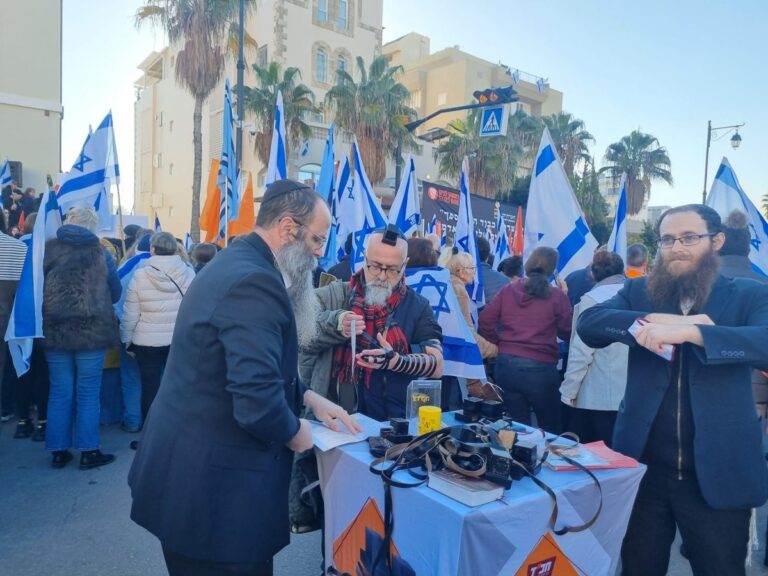
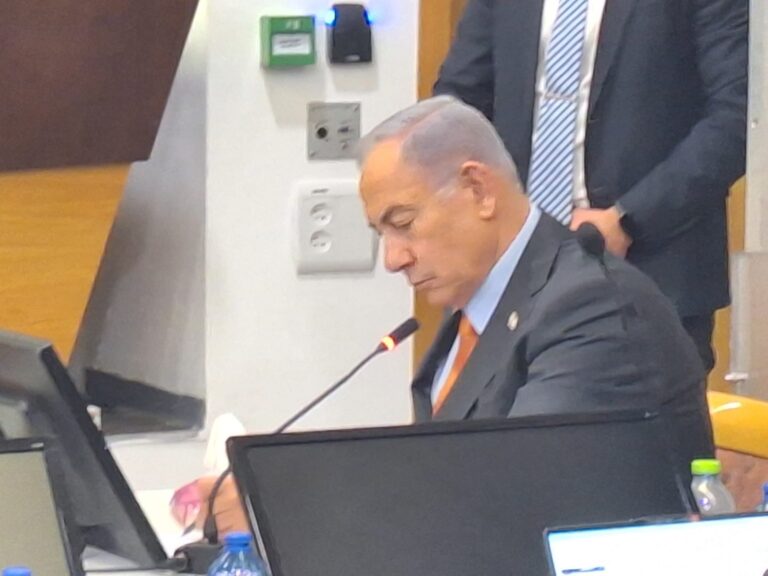




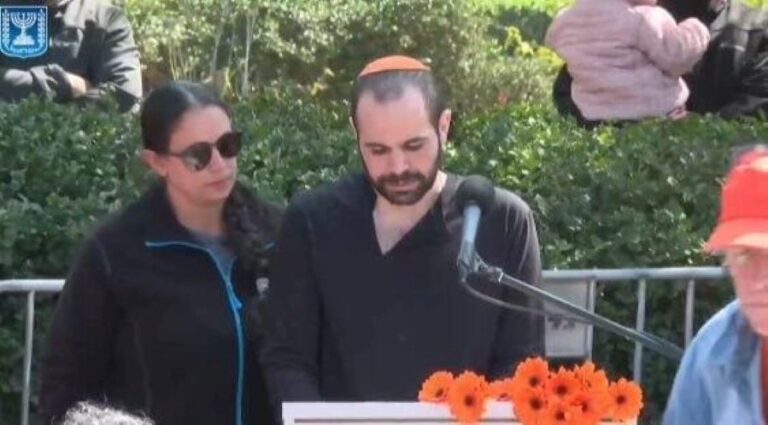
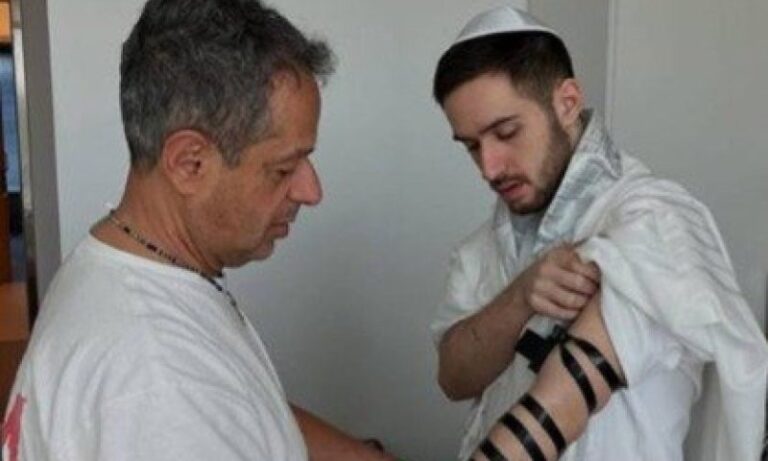
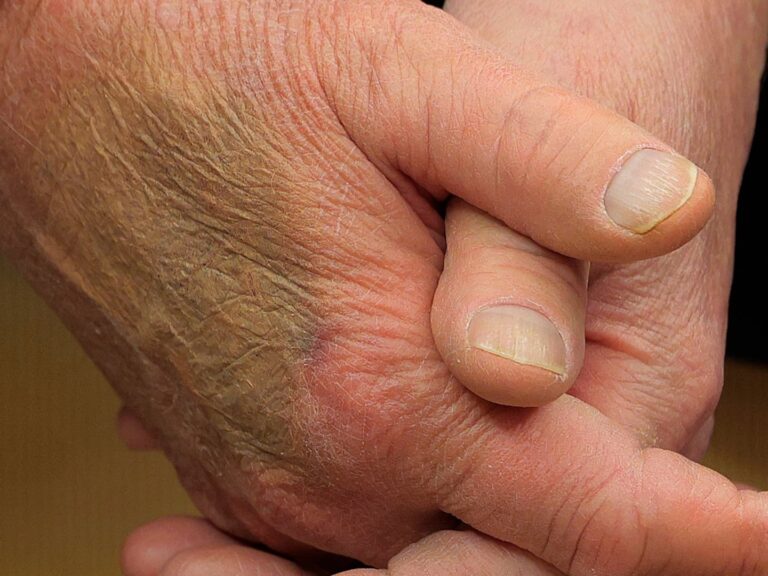

3 Responses
This is a good survey of a million mar’eh mekomos but there are many contradictory opinions so it’s hard to know halacha lemayse. For example, can’t put whole newspaper into shaimos because it’s genai for the Torah to be with devorim beteilim, but can put (maybe) Old+New testament into shaimos? How do you think the Torah feels about being with the gospels? Or, can throw out (maybe) galley proofs and parsha sheets, but not Torah tests?
Only the names of HASHEM should be placed in the Shaimos.
I worked in a cemetery and saw that many graves that were meant for MAYSAY MITZVOH were used for unecessary so-called SHAIMOS instead,and the MAISIM were placed elsewhere. Why cant we have more respect for the indigent MAISIM? Why do we have to be so lazy and not segregate HASHEM’S name from irrelevant matter?
Hey,
What are the halochos of people who cheat, lie and steal Sheimos and dump them in garbage dumpsters in the industrial areas near downtown Brooklyn?